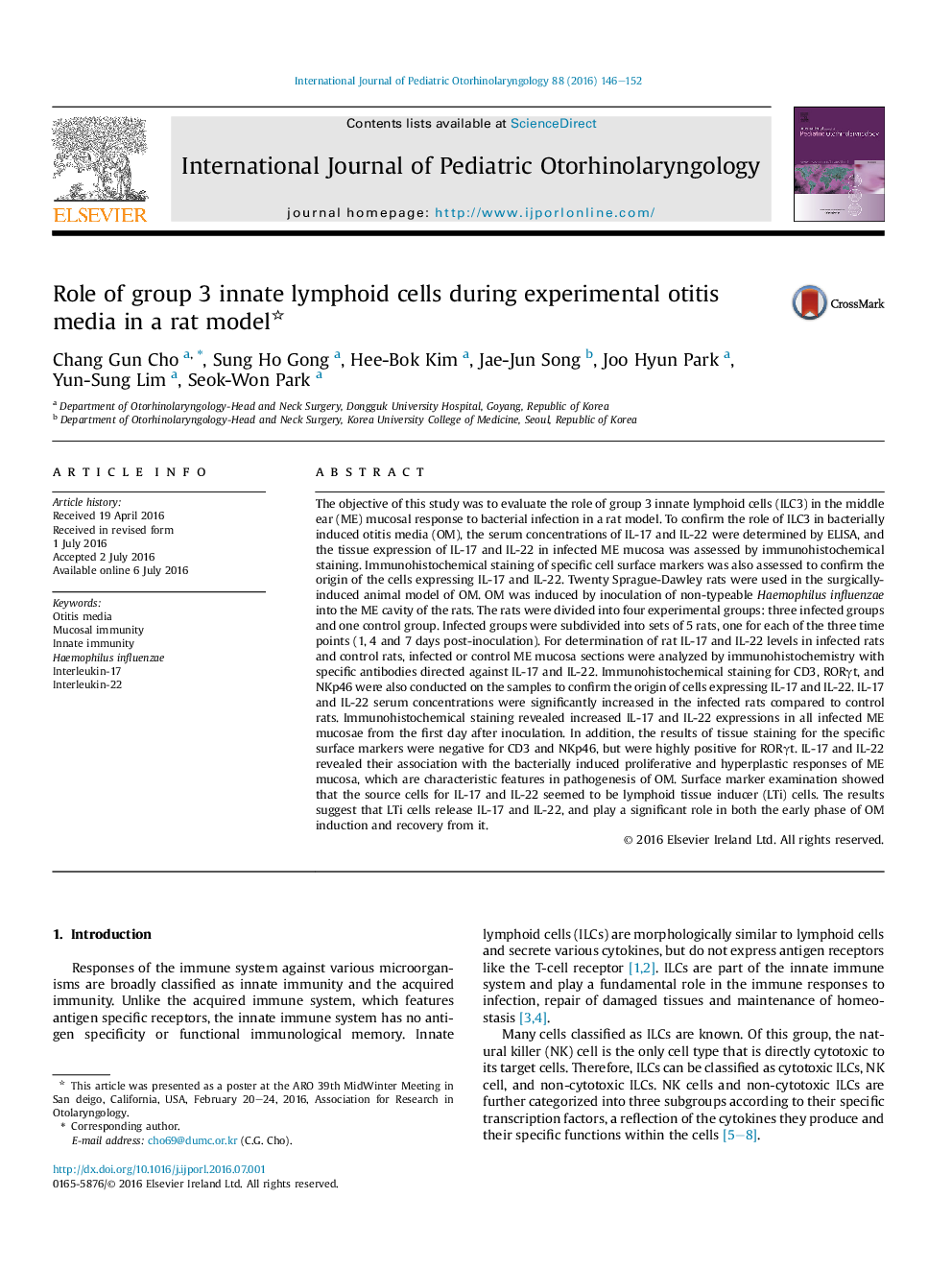| کد مقاله | کد نشریه | سال انتشار | مقاله انگلیسی | نسخه تمام متن |
|---|---|---|---|---|
| 4111402 | 1605980 | 2016 | 7 صفحه PDF | دانلود رایگان |
The objective of this study was to evaluate the role of group 3 innate lymphoid cells (ILC3) in the middle ear (ME) mucosal response to bacterial infection in a rat model. To confirm the role of ILC3 in bacterially induced otitis media (OM), the serum concentrations of IL-17 and IL-22 were determined by ELISA, and the tissue expression of IL-17 and IL-22 in infected ME mucosa was assessed by immunohistochemical staining. Immunohistochemical staining of specific cell surface markers was also assessed to confirm the origin of the cells expressing IL-17 and IL-22. Twenty Sprague-Dawley rats were used in the surgically-induced animal model of OM. OM was induced by inoculation of non-typeable Haemophilus influenzae into the ME cavity of the rats. The rats were divided into four experimental groups: three infected groups and one control group. Infected groups were subdivided into sets of 5 rats, one for each of the three time points (1, 4 and 7 days post-inoculation). For determination of rat IL-17 and IL-22 levels in infected rats and control rats, infected or control ME mucosa sections were analyzed by immunohistochemistry with specific antibodies directed against IL-17 and IL-22. Immunohistochemical staining for CD3, RORγt, and NKp46 were also conducted on the samples to confirm the origin of cells expressing IL-17 and IL-22. IL-17 and IL-22 serum concentrations were significantly increased in the infected rats compared to control rats. Immunohistochemical staining revealed increased IL-17 and IL-22 expressions in all infected ME mucosae from the first day after inoculation. In addition, the results of tissue staining for the specific surface markers were negative for CD3 and NKp46, but were highly positive for RORγt. IL-17 and IL-22 revealed their association with the bacterially induced proliferative and hyperplastic responses of ME mucosa, which are characteristic features in pathogenesis of OM. Surface marker examination showed that the source cells for IL-17 and IL-22 seemed to be lymphoid tissue inducer (LTi) cells. The results suggest that LTi cells release IL-17 and IL-22, and play a significant role in both the early phase of OM induction and recovery from it.
Journal: International Journal of Pediatric Otorhinolaryngology - Volume 88, September 2016, Pages 146–152
